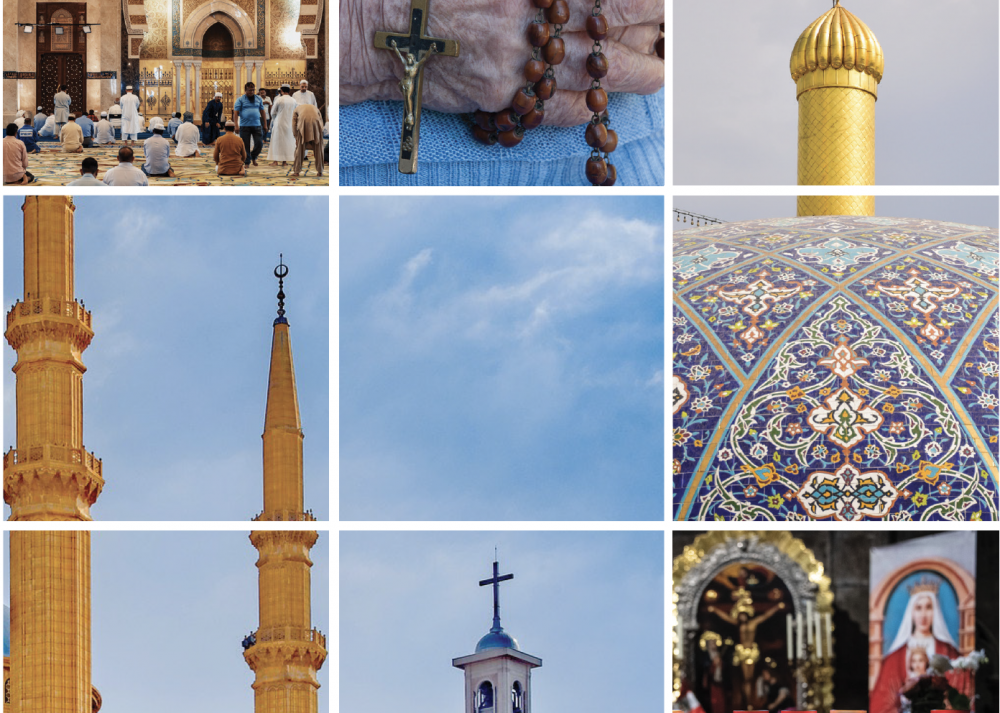
The world has become smaller in many ways, ever since communication became an accessible commodity. Today, cultural exchange is an inevitable feature of societies growing more diverse by the day. Media play a key role in this equation as they communicate certain messages to the masses. What these messages are, and how they are conveyed, influence tolerance and coexistence. Unfortunately, some media coverage is not always ideal for the development of pluralistic societies especially in the Arab world, where ownership of outlets is a luxury attainable to a handful of political and economic players from the ruling elites who have historically marginalized other communities. As a result, freedom of expression, cultural rights and eventually democracy and justice are jeopardized as minorities (and marginalized communities, even when they constitute a very large segment of the population) do not get a fair chance to express themselves and share their perspectives.
Religion plays a significant role in Arab countries, be it the daily life or the wide scale politics. Media here reflect that, as there are times they present diversity as a menace and simply echo the voices of whoever owns them. The purpose of this study is to look at the content produced by the most prominent media outlets in three countries in the region, Iraq, Lebanon and Sudan, and understand how each discusses topics pertaining to different religious groups, paying close attention to the way religious minorities are portrayed. Ideally, this data will be used later to shape media outlets that foster quality dialogue and utilize verified information, which in turn contribute to overall peace, democracy and social justice.
Furthermore, confirming whether the views of an author or source truly represent certain outlets isn’t always a straightforward matter. The outlet could simply be relaying a fact; however, it could be playing the role of a platform spreading a certain message, positive or negative, under the cover of “neutral” reporting. Both possibilities are important to keep in mind.
To better understand this, 482 pieces of pieces related to religion, religious freedom and religious diversity were selected and monitored out of the vast amounts of content created by the selected outlets: 163 were from Iraqi outlets, 259 from Lebanese outlets and 60 from Sudanese outlets.
During the monitoring process, it became clear that social and political topics are more present in thepublic debate while more technical topics such as the environment and science are perceived as complex or even trivial. They take time to yield results that affect everyday life while a single decision from a political leader or the “other” religious group could have direct consequences on “our” life and might lead to “our” very end. Overt religious-related hate speech was much less prevalent than implicit and subtle hints at certain segments of society.
Iraqi media focused consistently on pieces related to religious freedom or diversity. The government and Shiite oriented outlets having a highly similar discourse: Entirely denouncing violent movements while encouraging peaceful ones as well as adopting a strategy of positive self-depiction. In contrast, other outlets promoted the opposite discourse, highlighting government violence against protesters in general as well as the negative role of Shiite militias and Iran in Iraqi politics, on occasion. Minorities were only spoken of occasionally and portrayed as oppressed. However, their issues are not covered as often as those pertaining to Sunni-Shiite relations.
At first glance, neutral reporting seems to be a main characteristic for Lebanon’s outlets, however, the most notable and repetitive error committed by was methodological in nature. This includes using incorrect or misleading terms, many of which group entire religious sects under the umbrella of certain political parties. This is not only inaccurate but also feeds the audience’s sectarian mindset. Regardless of Lebanon’s political system, these mistakes do not reflect the true political climate.
In Sudan’s case, peacemaking between the North and the South occupied most of the discussion space. Highly antagonistic perspectives towards religions other than Islam were reported on by some of the local outlets: Christians, Shiites and in one case, Jews, though the reasons remain unclear. Secularism, human rights and Western values were often the target of attacks. Outlets based outside Sudan displayed a completely opposite approach, often advocating for minority rights and openly criticizing certain Sudanese political discourses.
The study showed that while the majority of the outlets monitored did not spread direct hate speech, many implicitly painted certain segments of society in a specific light. Whether it was a good or a bad light as well as what topics were highlighted depended on an outlet’s political affiliation and funding. Selection biases may be difficult to alter in institutions, however, individual journalists can also do their part to raise journalistic standards. Use of correct terminologies, sources, offering diverse perspectives and adopting a more ethical approach to reporting are among the key recommended actions, all of which are best addressed through workshops and continuous mentorship.